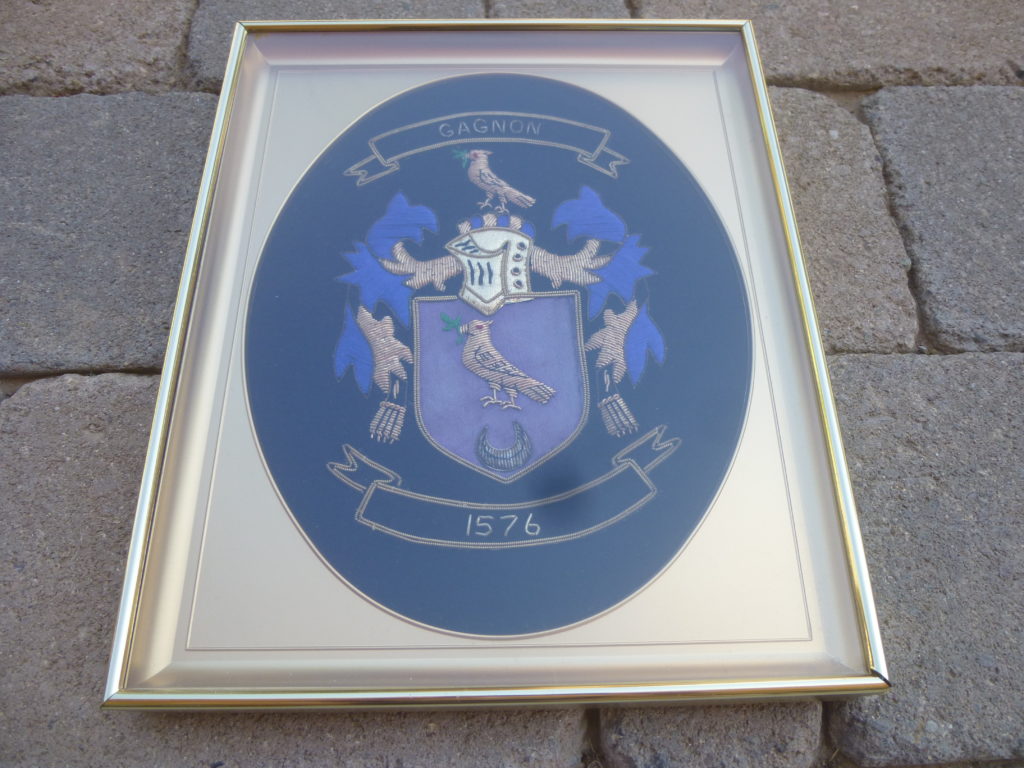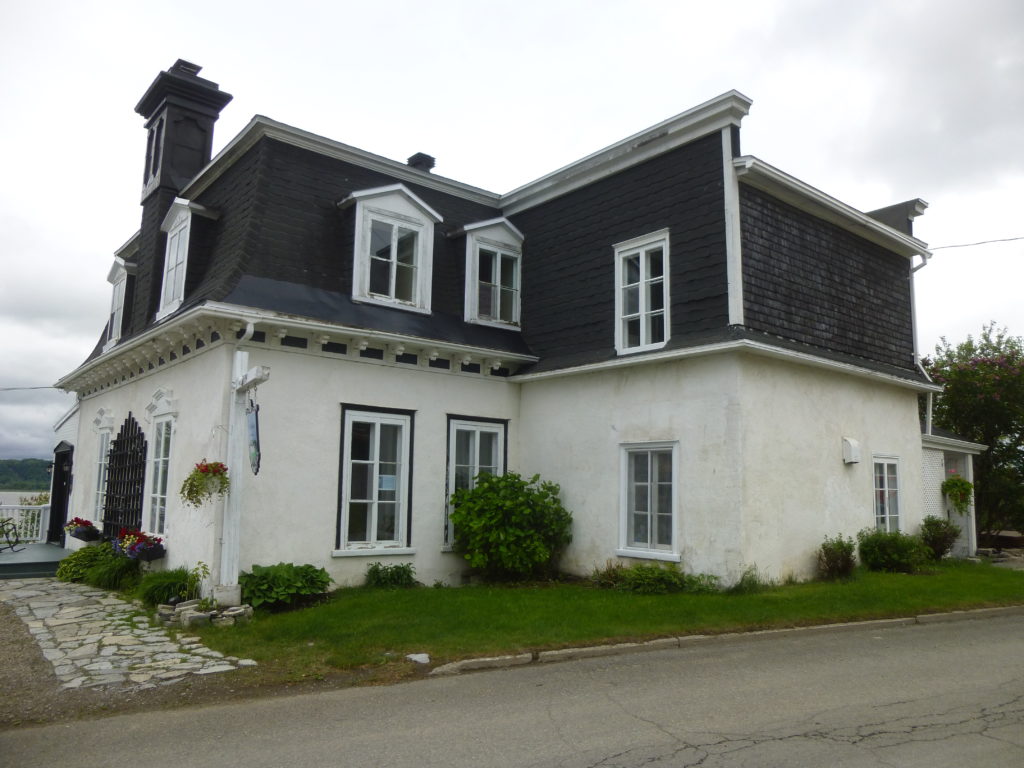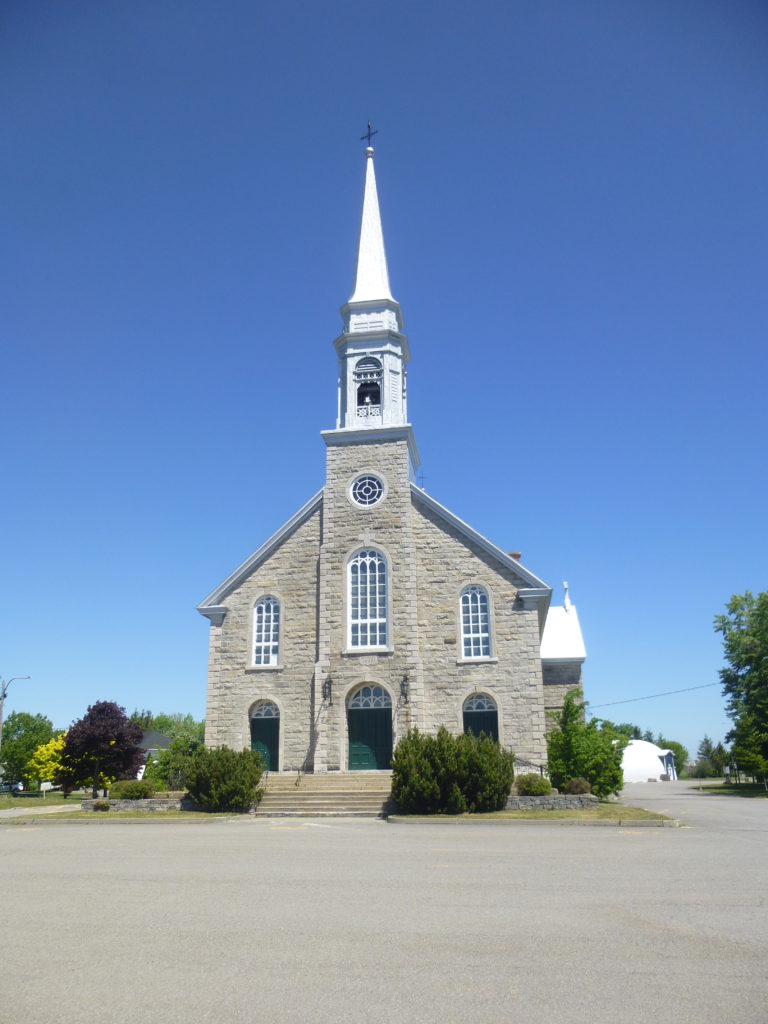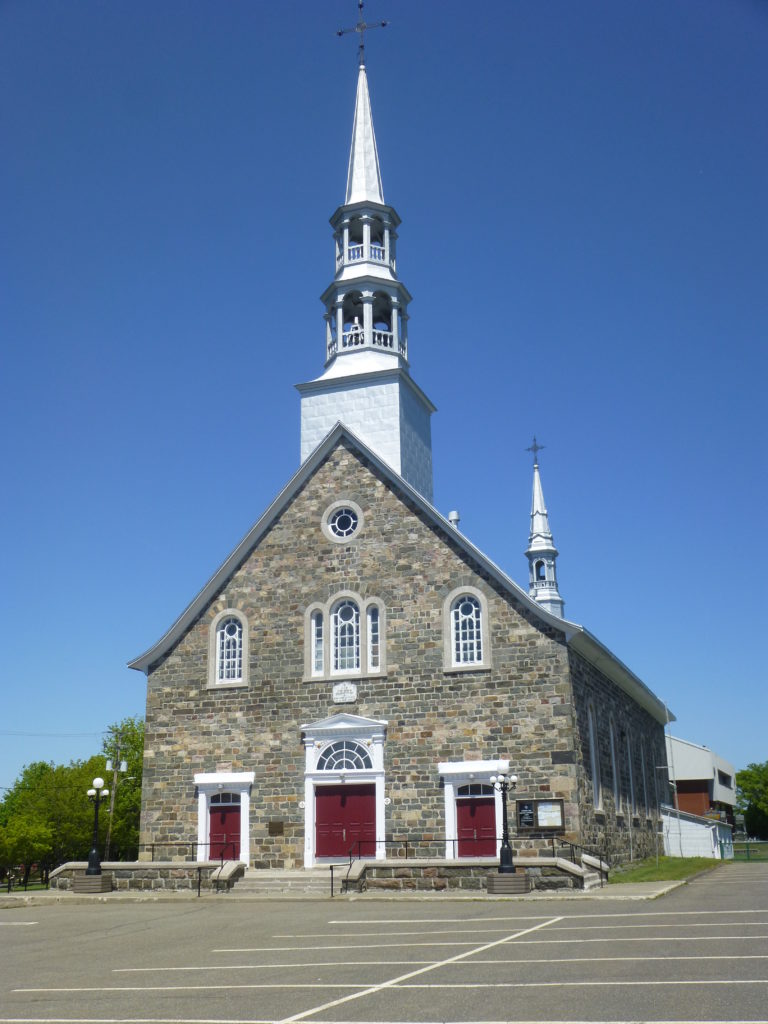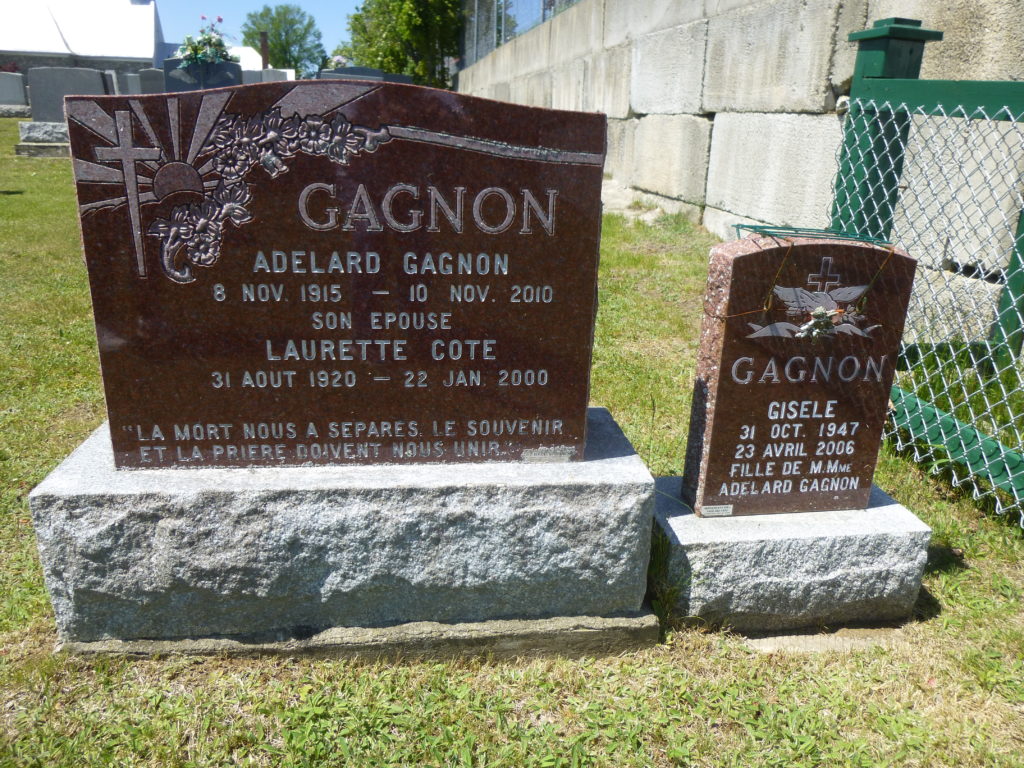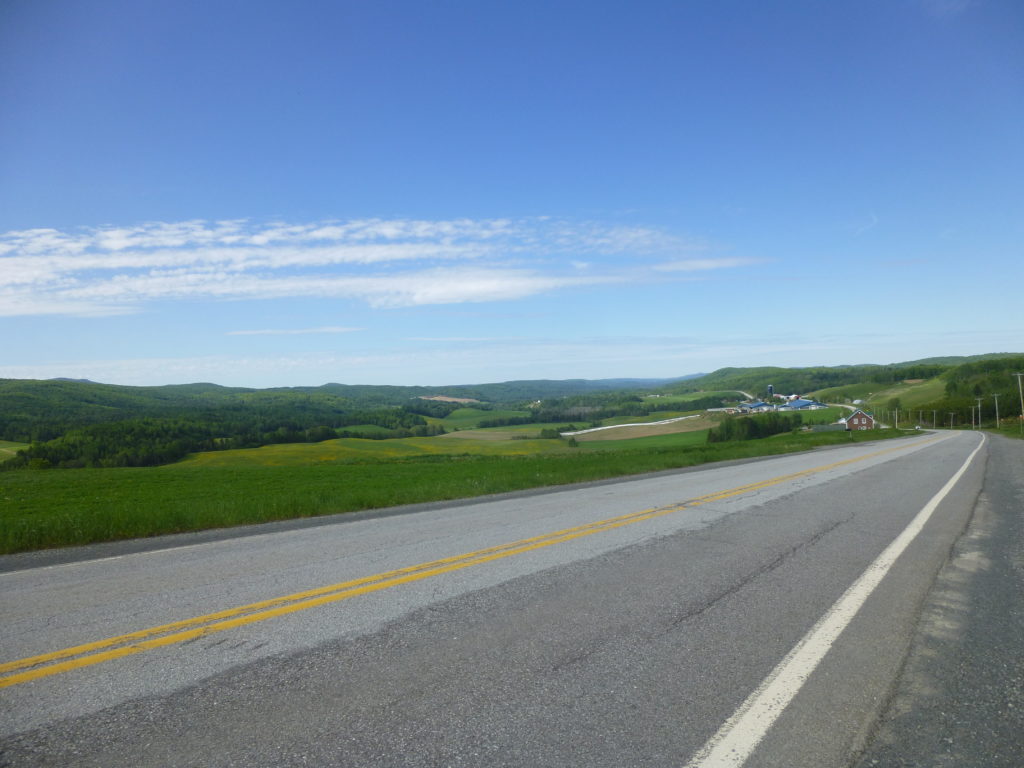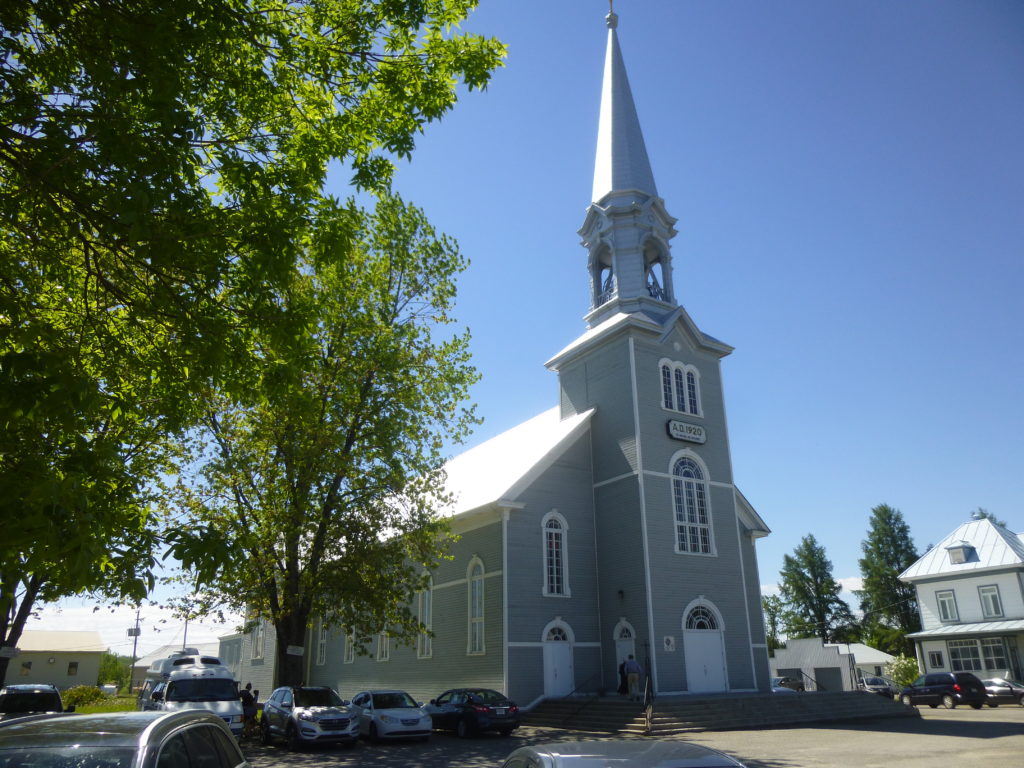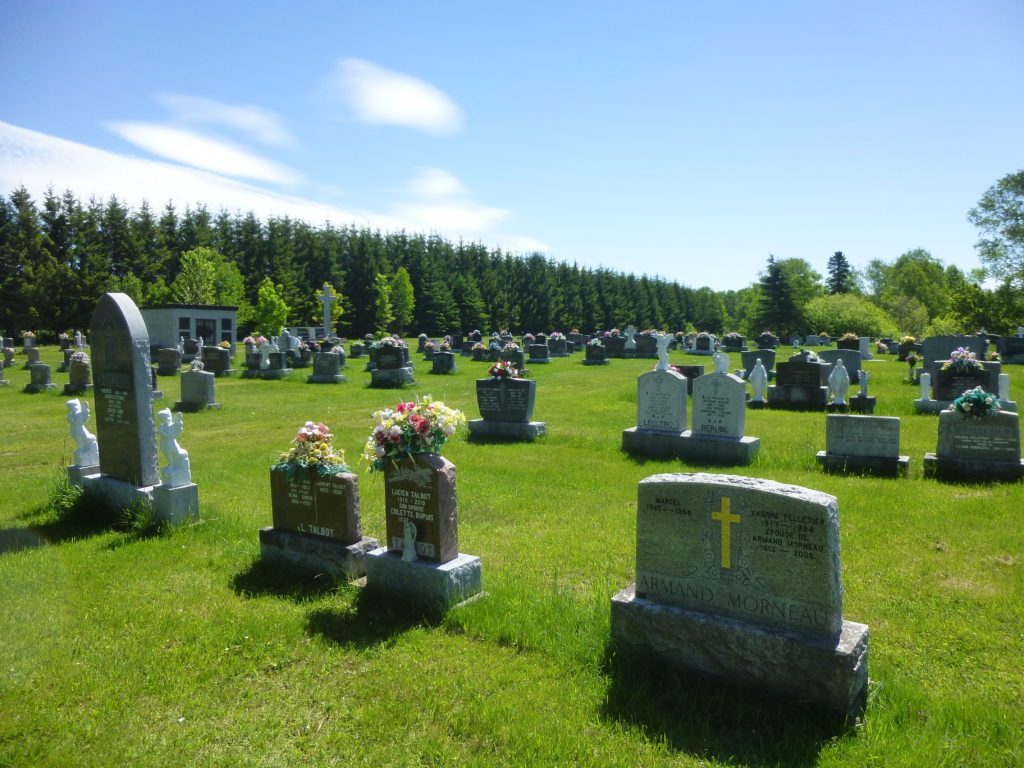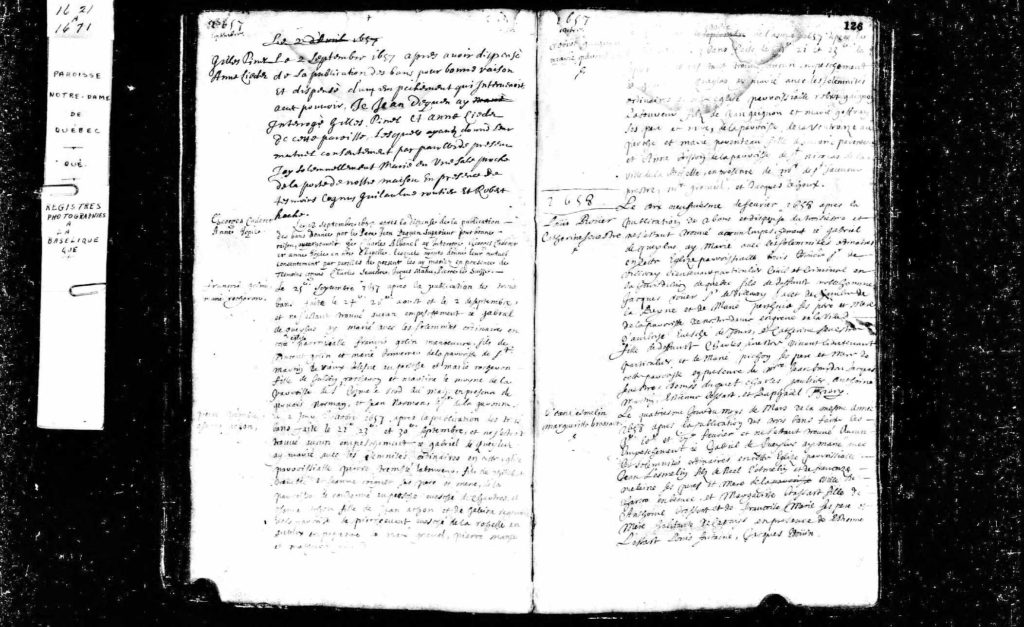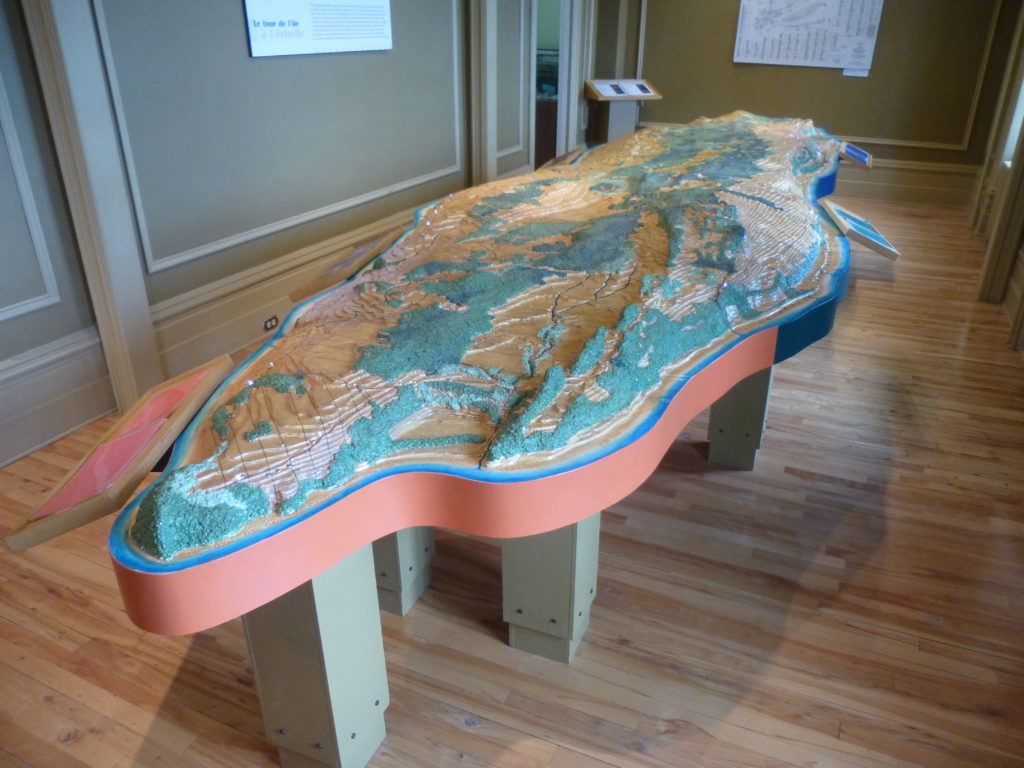Do you have a bucket list? I do, and it really only had one item on it, which I just completed. I’d like to tell you about it, but first some background.
Back in 1985, I was living in the state of Iowa where there was bugger-all to do in the way of climbing. My mother, God rest her soul, called me from Vancouver, BC and suggested that I meet her in Québec for the 350th reunion of our family’s arrival in New France. I had some cockamamie excuse for not going, and so didn’t, something I’ve always regretted. She passed away soon afterwards and I inherited all of the research that had been done chasing down our family history, and let me tell you, it was heady stuff.
There it was, all 13 generations laid out plain as day, from the small town in the province of Perche in the late 1500s, just south of Normandy in France, right on down to Yours Truly. I was sitting on a gold mine, something so complete and detailed that most family genealogists would give just about anything to have something like it. My mother’s eldest sibling, my dear Aunt Estelle, had spent an entire summer in Québec putting this together, all done before there was an internet. She had painstakingly and lovingly pored over parish records in little villages, slowly working her way through generations of our ancestors. You have to hand it to the Catholic Church, they wrote everything down. Dusty old leather-bound volumes recorded the birth, baptism, marriage and death of every soul in each parish.
I learned that my mother’s family, whose surname was Gagnon, was one of the founding families of Québec. Back in France, three brothers – Mathurin, Jean and Pierre – lived on a farm in a little village called, appropriately enough, La Gagnonnière. Their grandparents had bought the farm on December 28, 1565. Who knows how far back their family had lived in this area, but they registered the family crest in 1576. Here is a hand-embroidered re-creation of it I hang on my wall.
Their farm was in the forest of Perche, between Tourouvre and Ventrouze. To have made the decision to move to the New World must have been an enormous one. In 1635, the year they sailed to Québec, it was truly a frontier kind of place – after all, it was only a few short years after the Pilgrims landed on the Mayflower at Plymouth Rock. A fourth Gagnon, Robert, their cousin, was born in Ventrouze and arrived in Québec in 1655. All of the Gagnons in North America were therefore descended from these 4 hardy souls. Today, it is the second-most abundant surname in the province of Québec, numbering well over 60,000 members.
My aunt, in the course of her research, discovered some interesting facts. One of those who raised the U.S. flag at Iwo Jima, René Gagnon, was related to us. There is also a direct connection to the actor Michael Landon (Bonanza, Little House on the Prairie, Highway to Heaven) – his great-grandfather was my great-great-grandfather.
Okay, I started this off by talking about my bucket list. Here it was, 2018 – I wasn’t getting any younger, and I strongly felt that I should go to Québec and see some of this history for myself. Maybe my sister would like to be a part of such a journey of discovery – I called her, and her response was an immediate “yes!”. As the months passed, we firmed up our plans and discussed an itinerary. Our goal would be to visit a number of locations that had played a role in our family’s history in New France. The big day came – we each flew from our home cities and met in Montréal. In our rented car, we drove through the Québec countryside and arrived at our first destination.
The town of Château Richer was an important player in Gagnon family history. After arriving in Quebec City in 1635, the 3 brothers set up a business, and by 1640 had settled land a few miles east in Château Richer. We know that Mathurin had a land grant of 6.5 arpents of frontage on the Saint Lawrence River by 126 arpents in depth. In Québec, one arpent was 192 feet in length, so his land was about 693 acres, or just over one square mile in area. It took 5 years or more for a family to clear enough land and develop it to the point where it could support them. And this was one tough place to live – cold, snowy winters, plenty of wild animals, Indians who weren’t always friendly. Large families were the norm – your children were your insurance in your old age. Mathurin had 16, but only 9 of them lived long enough to marry.
We spent 2 nights in Château Richer, in a beautiful old home built in the year 1785.
My ancestors had many productive years in and around Château Richer, but as time passed, some of them moved on, heading to the south side of the river and farther downstream. As part of our trip, we felt we should visit the communities where they had lived.
Before I continue, I should mention another bit of interesting history. If you check out this website, you can read all about the Filles du Roi (Daughters of the King), who played an important role in establishing the colony of New France. Among their descendants are such notables as Hillary Clinton, Angelina Jolie, Madonna and Tom Bergeron. Do have a look at that site, as it makes for fascinating reading.
On May 2, 1725, Joseph Gagnon married Thérèse Mignot in the town of Rivière-Ouelle, about a hundred miles down the river from Quebec City. We lingered a while in the cemetery next to the village church and saw many headstones bearing the Gagnon name.
It wasn’t until another century had passed before my ancestors had moved on a little farther down the river, to a village called Cacouna.
There, my great-great-great grandfather Louis Gagnon married Henriette Sirois on the 4th of February in 1828. Once again, the cemetery was well-populated with Gagnon family members, all of whom were distant relatives of ours.
A generation later, in the neighboring village of Saint Arsène, my great-great grandfather, who was also called Louis Gagnon, married Virginie Beaupré on August 27, 1855. By the time another 2 generations passed, the family had moved farther down the river to Rimouski. Here, the St. Lawrence River is very wide, more than 30 miles, and is affected by tides in the Gulf of St. Lawrence. Near the turn of the 20th century, my grandparents were born. They married and had several children, and that all took place in a village called St. Michel du Squatec, an easy hour’s drive from Rimouski up in beautiful, rolling hill-country and a mere 15 miles from New Brunswick.
Of all the places we had visited so far on the trip, this was perhaps the one about which we were most excited. Our mother and her siblings were born here. She had no recollection of the place, as the family moved to Saskatchewan when she was an infant, and she had never returned. In a way, we were visiting the place for her. Even now, almost a century after her birth, the town had only 500 inhabitants. We quickly found the church – as in all the other places we visited in Québec, the focus of town life.
We went inside, and it felt like we were on hallowed ground. It was very emotional, being inside the very building where she and her siblings had been baptized. It would have made them happy to know that we had made a pilgrimage to the place of their birth. Here is the only known photo of all of them together, taken in 1986. None of them is alive today.
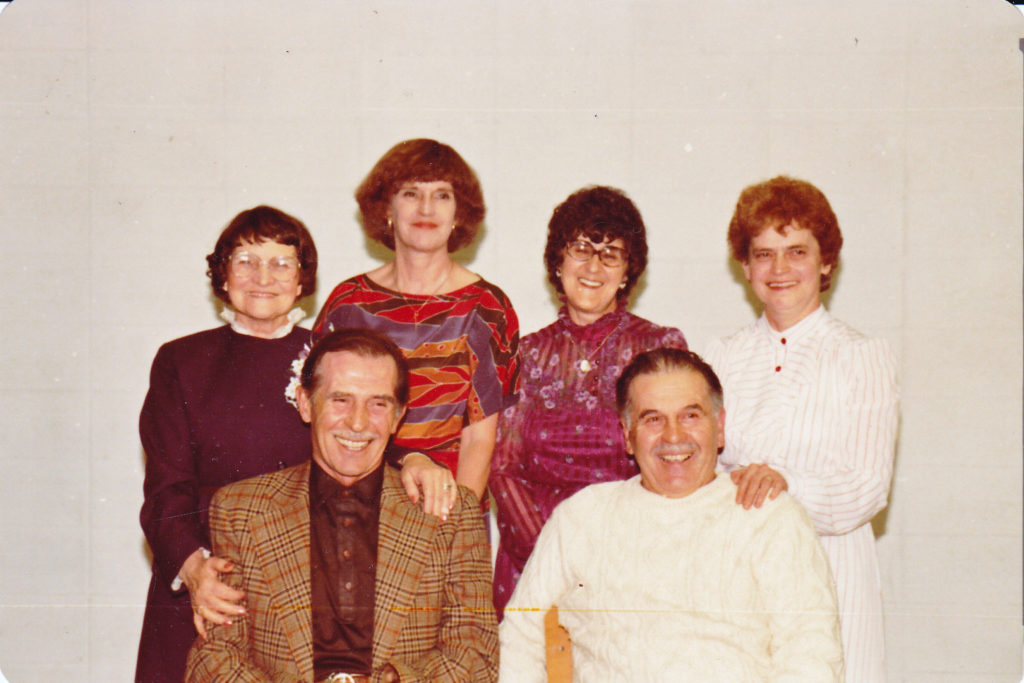
My aunts and uncles. French was the first language for every one of them. My mother, Thérèse, is in the back row, second from the right. Her sister Estelle is on the far left, and she is the one who did all of the research on our family genealogy.
When a few of the parishioners learned why we were there, they said we should visit the cemetery, as it was full of Gagnons. We did, and it was.
Our time here was limited, and we were sad to leave. One more special place awaited, though. Remember the title of this piece, “King of the Hill”? Well, I haven’t forgotten, so here goes – I’ll finally get to the point.
Remember the 4th Gagnon, Robert? He arrived later than the others, in 1655, and settled in a different place. Out in the middle of the St. Lawrence River by Quebec City sits an island, Île d’Orléans, and that is where he settled. He was granted a piece of land and began immediately to clear it. Two years later, he married a 16-year-old girl, Marie Parenteau – here is a copy of their actual marriage certificate, dated October 1st, 1657. It is the entry at the top of the left page.
They had 10 children: 4 boys and 2 girls married, 2 girls became nuns and 2 died at an early age. They raised their entire family on the farm, on the land they cleared. Robert died on September 2nd, 1703 and Marie followed 2 years later on November 17, 1705.
Now it’s hard to imagine that I could write a story that had nothing to do with mountains, right? So here’s the punchline, Folks. The island is 21 miles long and up to 5 miles wide. Back in the 1600s, when parcels of land were being granted to settlers, Robert Gagnon was given a piece that started on the north shore of the island, climbed steadily uphill in a southerly direction, and over the spine of the island.
But here’s the best part – his piece of land included the very highest point of land on the island, 502 feet above sea level. My ancestor truly was the King of the Hill. So maybe I came by my climbing instinct honestly, from my ancestor 363 years ago – at least it’s fun for me to think so.

